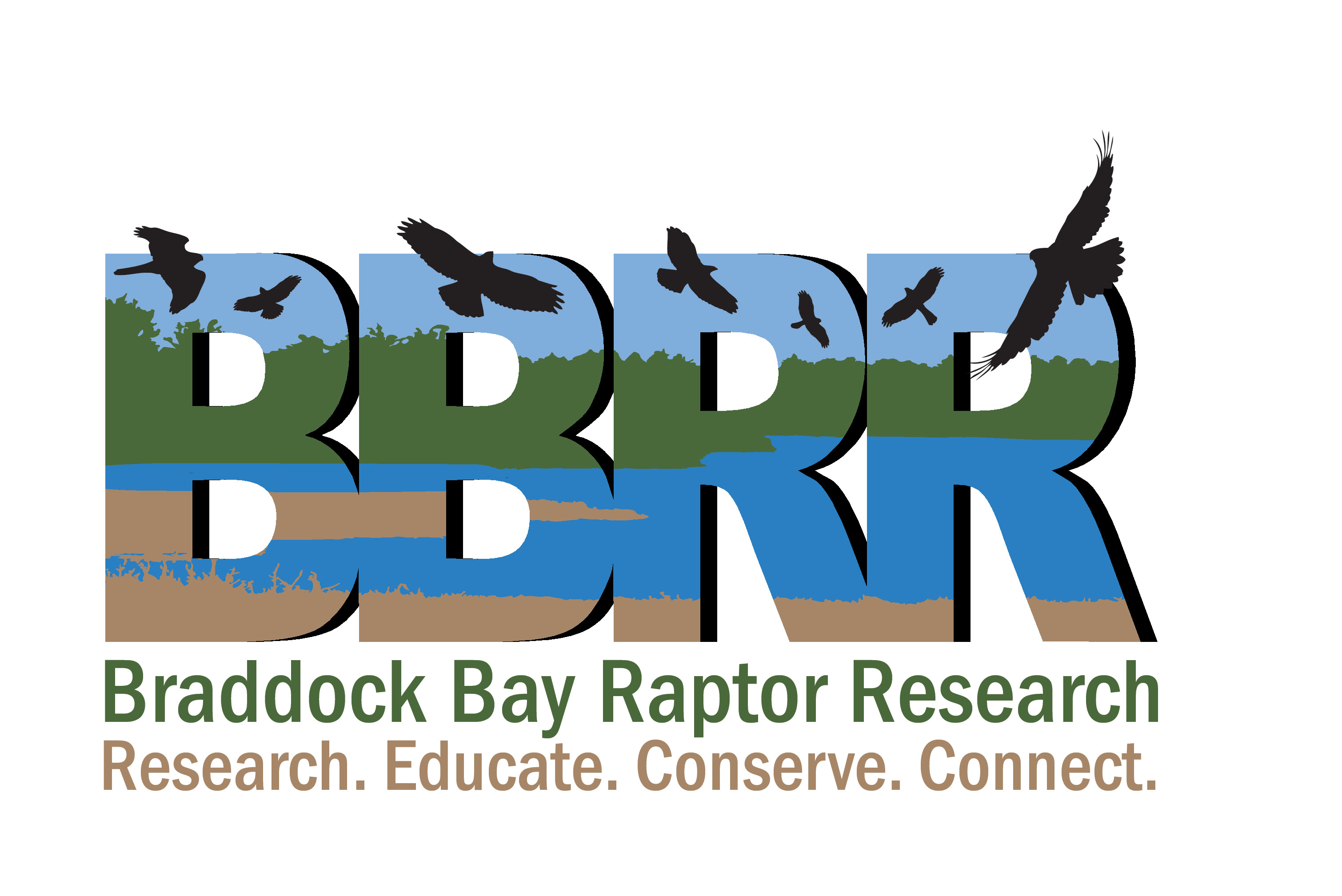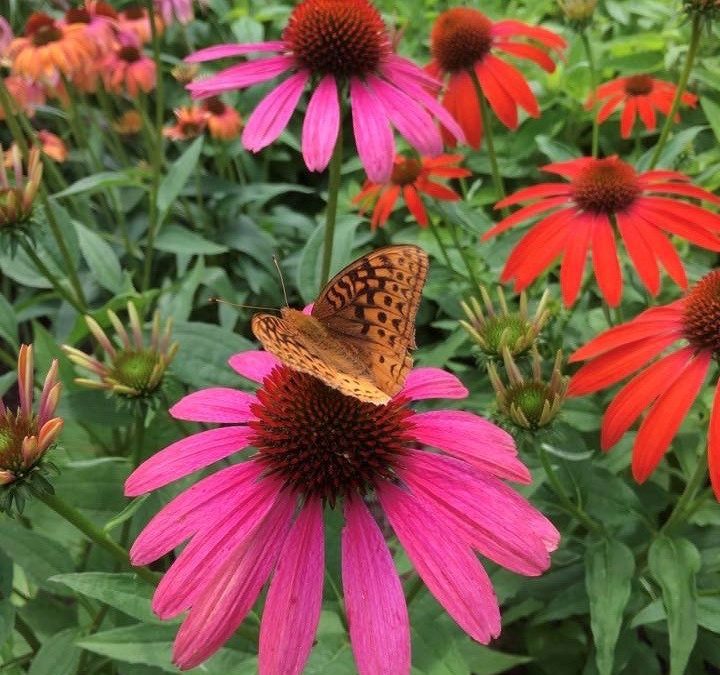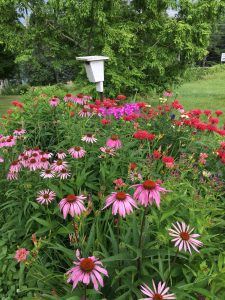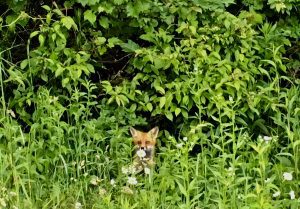BBRR is fortunate to have some very talented volunteers, including the author of this article, Carol Erb. Carol is a very experienced landscaper and Master Gardener, who specializes in organic and native gardening. Carol was to be a presenter at Bird of Prey Days this year, but she’ll be taking a raincheck for next year. In the mean time, she wrote this article on native gardening to share ideas that anyone can incorporate into their own landscape. We hope you enjoy giving some of her ideas a try!
At this time when more people are cooking at home, it can also be an opportune time to create a garden buffet for you and the wildlife in your world. I offer you my recipe and resources for putting together a feast for all of your senses, and also a chance to provide a much needed rest stop for the foraging wildlife. As Daena Ford said to me, “Don’t Let Time Be the Only Things on your Hands…Get them Dirty!”
First, some definitions and preparatory instructions before the recipe:
To add flavor and color to your garden, it is important to have some native plant species on hand in the form of shrubs, trees or wildflowers. My recipe is simple: no need to go totally native, but instead add to what you already have in your garden pantry.
Native plants are defined as indigenous plant species that have adapted to specific ecosystems and benefit both plant and animal diversity. New York State has 42 different ecoregions, all with unique plant profiles! Native plants are better able to compete against invasive species than non-native plants.
Know the invasive species already in your yard. Check out www.dec.ny.gov and look up the invasive plant list. Do your best to remove these from your property (often a continuous process). Check before you buy, or before you accept a handout of “free” plants from a generous gardener. Once you can identify and reduce these invaders, it will help to clear the table for your new menu of plants and welcomed guests.
It is essential that your view of “a Weed” is drastically adjusted. Chef Sean Sherman, better known as The Sioux Chef explains, “WEED is a Lazy word. It implies everything you don’t know.” And what we casually call weeds are edible gems to not just pollinators and birds, but were our ancestors’ sustenance. Check out, Bradford Angier’s Field Guide to EDIBLE WILD PLANTS and get cooking! These plants are full of minerals and phytonutrients. Newcomb’s Wildflower Guide by Lawrence Newcomb is also an excellent source.
INGREDIENTS FOR A WILDLIFE GARDEN BUFFET:
Mix in 1 Evergreen. Native is fantastic, like a White Spruce or Eastern Cedar, but if space is an issue; there are many dwarf non-invasive varieties of pine, spruce and arborvitae, hemlock, and holly.
Add 2 Berry Sources– Make sure at least one is for the 2-leggeds as well! Did you know that according to National Wildlife Federation that over 50 species of birds and animals eat Poison Ivy berries? Yes, red is a birds favorite color, but also blue is in too! I recommend Serviceberry (Amelanchier) which comes in bush or tree form. Its berries are super nutritious for all creatures and it is one of the first plants to bloom in the spring, followed by fruit and outstanding fall color. Blueberry, blackberry, red raspberry and the like can all be added and devoured. Choose a native Dogwood (Cornus florida) with its beautiful blooms, fruits and graceful habit for all-season interest.
Add 1 Butterfly/Hummingbird attracting shrub. Try a fragrant Buttonbush (Cephalanthus occidentalis), a true native. Avoid Butterfly Bush (Buddleia), now on the invasive species list. Spicebush (Lindera benzoi) is another choice, a host plant for the Spicebush Swallowtail butterfly. Perhaps you already have your own Lilac Festival? A true magnet for hummingbirds, butterflies and Rochesterians.
Next, add Seed and Nectar bearing Wildflowers. Pick at least 3 perennial native wildflowers for the birds such as Coneflowers (Echinacea laevigaa, pallida, or purpurea); Black-eyed Susan, Rudbeckia varieties; Beebalm (Monarda); Sunflower perennial natives (Helianthus); Foxglove (Digitalis); Hardy Geranium or Cranesbill; Penstemon; Coral Bells (Heuchera); Foam Flower (Tiarella) and so much more.
* Caution: Avoid or do not purchase cultivars of Native flowers. These Designer Varieties are bred for color and unusual flower shapes. Native species plants evolved side by side with native pollinators. These fancy flower heads can make these plants unusable to our pollinators and deprive them of nourishment. There is a possibility that these flowers could cross-pollinate with native species and be another detrimental force to already fragile habitats. EX.: Cultivars of native Purple Coneflower such as “Honeydew “and “Pink Double Delight” are just two of these pretty new culprits.
Sprinkle in Host Plants to feed the very hungry caterpillars. One of my favorites and a somewhat finicky plant Butterfly Weed (Asclepias tuberosa), is the diminutive orange cousin of our tall, fragrant Common Milkweed (Asclepias syriaca). If you wish to add this beloved host plant of Monarchs, then plant it in a separate area or as a backdrop. It can become aggressive in a small space. Other host sources: Parsley, Dill, Fennel, and Basils. Make Pesto!
Throw in some Nectar Plants. Butterflies and Hummingbirds are attracted to fragrant flowers (and so are we!):
* Perennials: Columbine (Aquilegia species), Jewelweed (Impatiens capensis), Yarrow (Achillea millifolium), Joe-Pye Weed (Eupatproum species), Daylily (Hemorocallis species), Lavender, Dianthus, Asters, Goldenrod, Autumn Joy Sedum, all Phlox (native and cultivars).
* Annuals: Petunia, Alyssum, Fuchsia, Nicotiana, Nasturtium, and Zinnia
Try a Container Garden by mixing up your own recipe of Nectar and Host plants!
TIME TO SET THE TABLE: The NO-Till Lasagna Method
- Choose a site that is in full sun or partial shade and receives at least 6 hours of sun.
- Outline your bed shape with a garden hose. Be creative. It’s also okay to be square.
- Gather newspaper, it’s lead-free or cardboard. Enough to cover your garden area.
- Have a water can or hose ready. Lay down the newspaper at least 3 pages thick or 1 sheet of cardboard over the sod.
- Water as you go so the paper doesn’t blow.
- Add at least 2-3” of compost. I recommend Brewer’s compost like Nutra-Brew or Mushroom Compost. This is all Weed- Free and helps the environment thru recycling these products.
- Spread compost then add 2-3” of natural NO DYE mulch such as hardwood or pine shredded mulch. Leaves that have been chopped up by mulching mower is perfect.
- Let the garden bake for at least 6 weeks! Now is the perfect time- by mid to late May or early June it’s ready to plant. This method can also be done in the Fall and be ready for Spring planting.
- Start adding your ingredients and remember too that it’s best to start small, you can always bring more to the spread! You are the master chef of your design. Read labels for planting specks.
- Absolutely No Pesticides in this garden or you will be asked to leave the table!
- Add water features, bird houses and stone pathways.
- Try sowing some wildflower seeds.
- Leave the seed heads for an over-winter source of food for the birds. Don’t clean up everything!
Sources to Cultivate Your Mind and Garden: Many of these resources are in our own back yards!
- Monroe County Soil & Water Conservation: monroecountyswcd.org 585-753-7380. Order Native plant materials. Order early Jan./Feb. for April pick up.
- Finger Lakes Native Plant Society. FLNPS.org. A wealth of knowledge and plant sources.
- Native Plant Nursery Directory find local nurseries selling native plants: PlantNative.org
- National Wildlife Federation is an excellent resource! nwf.org/native Get your Wildlife Garden Certified through NWF.
- New York State Park Blog and Plant Materials Program. Check out the cooperative Sonnenberg Garden/Ganondagan grassland restoration habitat program for endangered bird species Go to: https://nystateparks.blog/2020/01/21/growing-the-future-in-gilded-age-greenhouses




Lovely article!